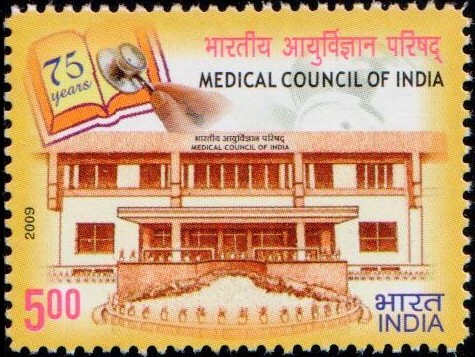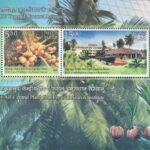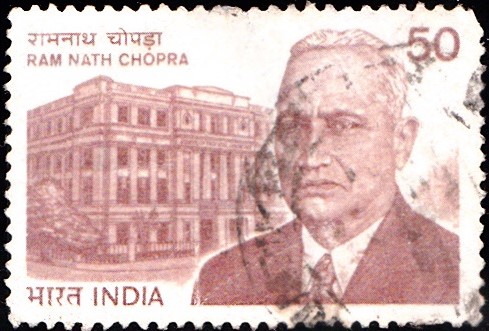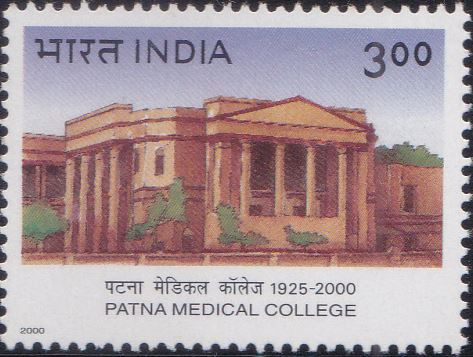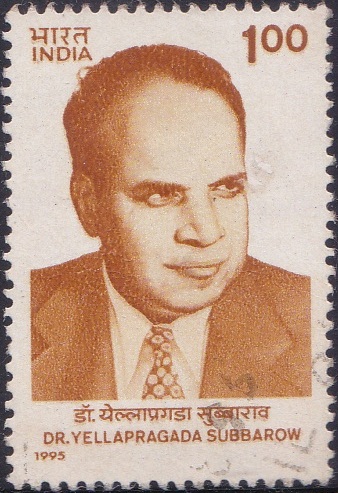
Dr. Yellapragada Subbarow
A commemorative postage stamp on the Birth Centenary of Dr. Yellapragada Subbarao, an Indian biochemist :
Issued on Dec 19, 1995
Issued for : The Department of Post is privileged to bring out a commemorative postage stamp on the birth centenary of Dr. Yellapragada SubbaRow whose life and achievements are a source of inspiration to the present and future generations.
Credits :
Stamp & F.D.C. : Mr. S.P.K. Gupta
Cancellation : Mrs Alka Sharma
Type : Stamp, Mint Condition
Colour : Single Colour
Denomination : 100 Paise
Overall size : 4.06 x 2.73 cms.
Printing size : 3.71 x 2.38 cms.
Perforation : 13 x 13
Paper : Indigenous un w/m Adhesive Gravure Coated Stamp Paper in Sheets 53.5 x 50.8 cms.
Number of stamps Printed : 0.6 Million
Number per issue sheet : 40
Printing Process : Photogravure
Printer : India Security Press
Name : Yellapragada Subbarow
Born on Jan 12, 1895 at Bhimavaram, Madras Presidency, British India [now in Andhra Pradesh, India]
Died on Aug 8, 1948 at New York, United States
About :
- Dr. Yellapragada Subbarow who has been hailed as “one of most eminent medical minds of the century” was a wizard of wonder drugs and one of the greatest geniuses of medical science. His gifts to mankind include folic acid which conquered tropical sprue, once the scourge of India; tetracycline antibiotics which combat a wide range of fevers and infections; di-ethyl-carbamazine which stems filariasis and reduces chances of developing elephantiasis; methotrexate used in childhood blood cancer and some forms of adult cancers.
- Dr. Subbarow conceived all these drugs and developed them in the forties as the head of research teams which he organised in the United States of America. These drugs have saved millions of lives all over the world and improved the quality of life during the past fifty years.
- Dr. Subbarow was born on 12th of January, 1895 in Bhimavaram, Andhra Pradesh. He initially sought his prime motive in religion but was persuaded by the Ramakrishna Mission to enter medical college. Having qualified from the Madras Medical College, he worked for a while on systemising Ayurvedic drugs to better fight disease. With a view to acquire modern research techniques at the Harvard School of Tropical Medicine, he went to U.S.A. in 1923. A year later he shifted to Harvard Medical School where he grew to be a giant among biochemists with fundamental research to his credit that unravelled a life process and enriched the knowledge of vitamins.
- His research at Harvard in the twenties and thirties yielded a method for estimation of phosphorus and this phosphorus test is now an invaluable tool in the diagnosis of certain metabolic ailments. His research also led to the discovery of phosphocreatine and ATP which have been shown to be the sources of muscular energy, an important key to the mystery of life.
- Dr. Subbarow’s years at Harvard and later as Director of Research at Lederle Laboratories were professionally fulfilling. He was the maestro orchestrating the new ideas of the young men he gathered in his laboratory and inducing a new creativity among the experienced veterans.
- Dr. Subbarow passed away on the night of August 8, 1948 in Pearl River, New York. It is a matter of national pride that his discoveries and contributions to bio-chemistry and medicine have endured the five decades since then.
- Text Source : Mr. S.P.K. Gupta.



 Issued by
Issued by